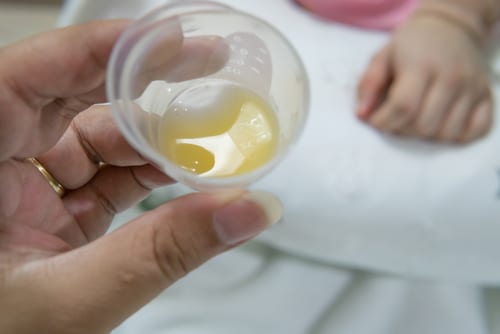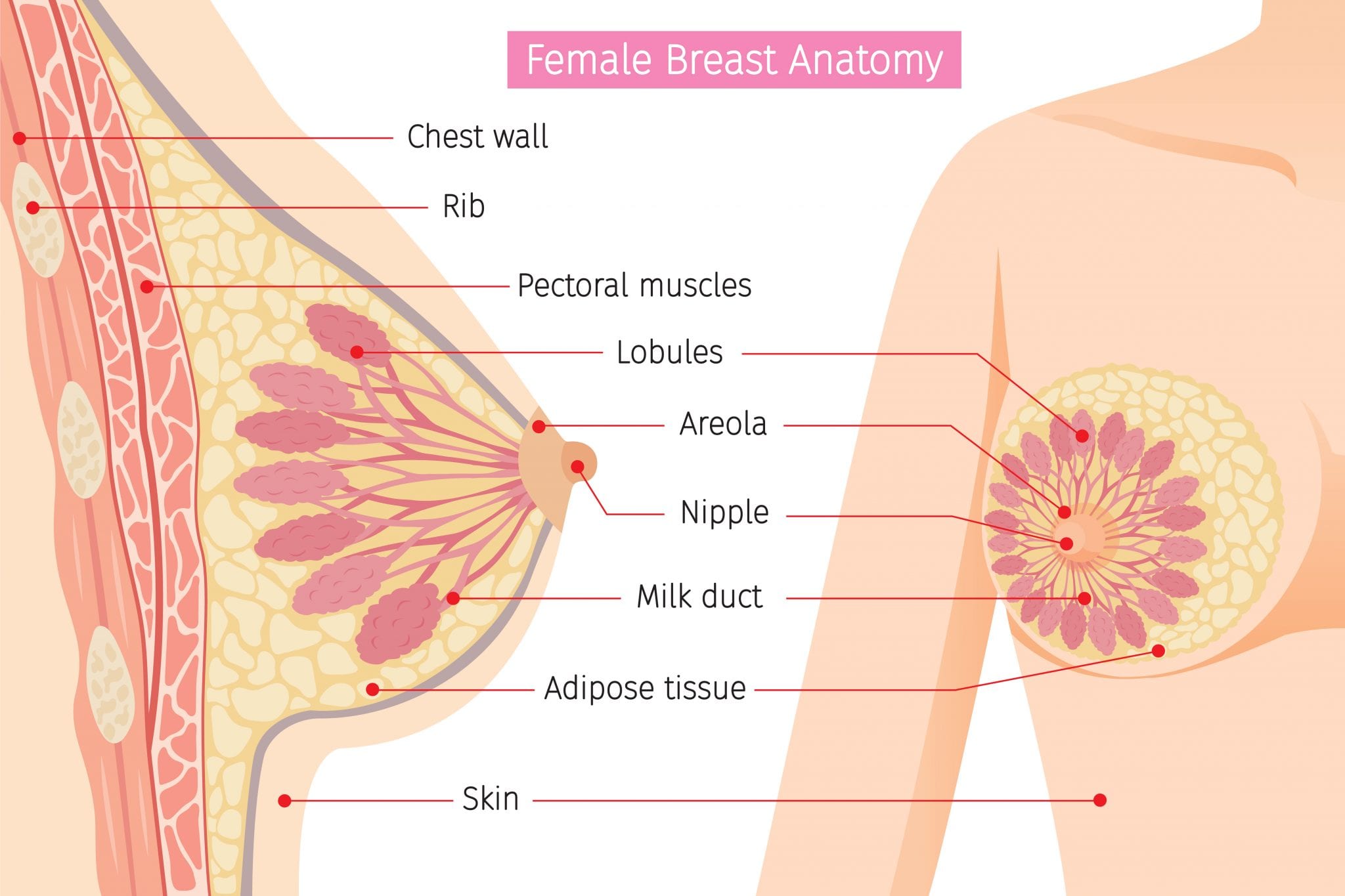

Breastfeeding can be one of the most beautiful experiences a mother can share with her baby. And breastmilk itself is considered to have numerous health benefits for baby.
So today many first time moms-to-be plan to breastfeed their babies. But when baby arrives, the dream of putting baby on the breast and magically producing enough breastmilk, is often shattered.
Instead it’s replaced with painful breasts and nipples, struggling to produce enough milk or wincing while you try to help baby latch correctly.
And while the antenatal classes teach a lot about the birth of baby and how to look after baby, there’s often very little on the intricate details of breastfeeding.
So we’ve put together this Breastfeeding 101 guide to answer all your questions about how to get breastfeeding started and what to expect.
If you have already begun breastfeeding and are experiencing problems then you can take a look at our article How to deal with these 5 common breastfeeding problems.
Alternatively you can also contact some of the support groups mentioned below for more guidance and help.
Remember that however you choose to feed your baby, be it breastfeeding or formula feeding or both, all that matters is that your baby is fed and happy.
Line up your support
The single most important tip is to have good people who can support your breastfeeding around you.
Making sure you have lots of support from people who have knowledge and experience helping mothers to breastfeed, can make the difference between giving breastfeeding a real go and giving up.
Whether you’re planning a hospital or home birth ask your midwife if there is a lactation or breastfeeding specialist who can be with you during your first feeds.
Once you’re home, make sure you know where you can go to get further support so you don’t end up struggling alone.
You can find Breastfeeding Network Supporters here. There are also these National breastfeeding helplines you can contact to ask questions or get help and support at any time of the day.
You can find local support groups where you can pop along and feed your baby and get advice and help too. Baby Cafe has some great local groups to try.
How long after birth should I start breastfeeding?
Try giving your first breastfeed as soon as possible after birth. In the first hour after birth newborns tend to be more alert. They are born with a natural reflex to find their mother’s nipple and latch on.
Lay your baby on your chest skin-to-skin and see if he seems interested in finding your nipple.
Babies are very sleepy eaters after all the exertions of birth. You can try gently stroking their cheeks to keep them awake and see if they will feed a bit more.
Should breastfeeding be painful?
Getting your baby to latch onto your nipple is the key to successful breastfeeding.
It might feel a bit strange at first but it shouldn’t hurt. If it hurts to breastfeed then this could be a sign that your baby hasn’t latched on correctly. Gently ease her off your nipple and try again.
You’ll know your baby is in the right position if you can hear him sucking and swallowing.
It can take a few goes and a bit of time to get it right and it can really help if someone is there with you to help show you what the correct latch should look like.


What your first milk will look like
Your very first milk that you will produce is called colostrum.
It’s thick and yellow and packed full of a whole heap of amazing nutrients that protect and nourish your baby in his first days of life.
It’s such a magical substance that it’s sometimes called ‘liquid gold’. For babies it really is a superfood.
For the first 2-4 days this is the only milk your breasts will produce. Because it’s so concentrated and your baby only needs a small amount your breasts might not feel so full.
You might worry that your baby isn’t getting enough.
Your baby’s tummy is only the size of a marble and they don’t need a lot to fill it up. So feeding little and often is the key. As long as baby is satisfied after a feed and settling to sleep, she is probably getting enough.
The more you feed, the faster your milk will come in and so feed as much as you can in the first few days.
If baby is crying or your not feeling like they’re getting enough milk then speak to a consultant. And always trust your own instincts if you feel they need supplementing with formula.
When your next milk comes in
After about 3 or 4 days you will notice that your breasts become very full and heavy. This means that your milk is coming in. It’s changing from colostrum to breast milk, which is thinner and more watery.
At first you produce ‘transitional milk’, which is a mix of colostrum and breast milk. Over the next few weeks less and less colostrum is produced and you’ll be producing breast milk.
It can feel very weird when your breasts suddenly seem to swell overnight and feel full and heavy. A supportive bra can help you feel more comfortable. Again, making sure that your baby latches on correctly so they can have a good feed is key.
It’s also important to make sure that they drain your breast at each feed so you’re less likely to get any blockages or infections like mastitis. You can massage any excess milk from your breast using your own hand if this helps.
If you’re struggling or unsure if you’re doing things correctly, then do get support to make sure each feed goes well and is not painful.


How do breasts produce breastmilk?
Our bodies are amazing and so are the ways they change to make sure we have milk to feed our babies.
It doesn’t matter if you have small breasts or big ones.
It doesn’t matter what shape they are. Your breasts will produce the milk that your baby needs.
Your baby and body work together too. If baby needs more milk he will feed more often and this stimulates your breasts to produce more milk, to support your baby.
In terms of how your breast physically produces the breastmilk, there are a number of milk ducts in your breast, which are like little straws connected to your nipple. In pregnancy these milk ducts grow in number and size.
The ducts branch off into smaller channels called ductules. At the end of each ductule is a cluster of small sacs called alveoli. A cluster of alveoli is called a lobule; a cluster of lobules is called a lobe. Each breast contains up to 20 lobes, with one milk duct for every lobe.
When your hormones change during pregnancy, the alveoli take fats, sugars and proteins from your blood supply to make breast milk. Cells all around the alveoli squeeze the glands to push the milk into the ductiles and then to the ducts. It’s a pretty amazing process.
The let down reflex
For your milk to flow from your breasts to your baby’s mouth it must be ‘let down’. Each time your baby sucks at your breast the nerves send signals to release the milk to your ducts.
You sometimes notice this let down reflex after your baby has been sucking for a couple of minutes. You might feel a tingling sensation or even notice milk dripping or even squirting from your other breast.
For the let down reflex to happen it helps if you are relaxed too. So try to settle yourself and be comfortable before you start.
Have a glass of water nearby as breastfeeding is thirsty work for you. If you look at your baby while you feed you could also encourage your body to release oxytocin (the ‘love hormone’), which can also helps you produce more milk.
What affects breast milk production?
If everything goes well then new mums will find that if they feed their baby on demand and make sure she is latched on correctly that their bodies will produce the right amount of milk for baby.
When babies are going through a growth spurt they feed more and this triggers your body to produce more milk for them.
However the body is a delicate balance and there are things that can affect your breast milk production that are worth being aware of:
- Stress or anxiety. This might affect your let down reflex and decrease production. If you’re feeling low or anxious try to find a way to relax.
- Eating or drinking too little. It’s all too easy to neglect your own needs while you’re giving all your attention to your newborn baby. But if you don’t nourish yourself then you might not produce enough milk. Breastfeeding burns an extra 500 calories each day. Fluids are important too. So make sure you eat well and stay hydrated.
- Long periods between feeding. Your baby needs to feed little and often during the first few weeks. If they are sleepy or not latching on correctly then your body won’t get the triggers to produce more milk. It you are experiencing problems with breastfeeding baby directly from the breast you can also stimulate your breasts by using a breast pump, by massing them or by expressing milk by hand. This can help increase your milk supply and you can offer baby your expressed breast milk in a bottle.
- Getting sick. Fatigue, diarrhoea and vomiting can interrupt your milk supply. If you get sick then get rest and help so that you can get better.
- Low thyroid. If you feel your baby isn’t getting enough milk it may be worth getting your thyroid checked. A low thyroid function can mean that you are not producing enough breast milk and baby isn’t getting enough nourishment.
- Medication. Some medication can decrease production so always check before you take any pills.


How often should I breastfeed my baby?
The answer is more often than you maybe imagined.
In the first month you’ll probably find your baby needs to feed about 8-12 times a day. It’s best to feed on demand and your baby will probably want to feed every 1-3 hours.
After the first month things should settle down a little and you will find your baby wants to feed between 7 and 9 times a day.
At first it can feel like you’re feeding round the clock but it you’ll soon notice your baby settling into a feeding routine.
While baby should be feeding often during the first few weeks, the feeding should not be constant. Baby should look satisfied after a feed and be able to settle to sleep. If not then they may not be getting enough milk and you should seek advice straight away or consider supplementing with formula.
How will I know if my baby’s getting enough milk?
If only boobs were transparent so we could see how much our babies were drinking. They’re not.
So here are some ways to let you know your baby is getting all the milk they need:
- She seems satisfied and content after feed.
- She has about 4-6 wet nappies each day.
- She has regular bowel movements.
- She settles well after each feed.
- She is alert when she’s awake.
- She’s gaining weight. Your midwife or health visitor will weigh her often to check.
Your baby may not be getting enough to eat if he or she:
- She doesn’t appear to be satisfied after feeding and fusses a lot
- She seems hungry often
- She doesn’t have many wet or dirty nappies a day
- She isn’t gaining weight
If this is the case make sure baby is fed and getting enough milk by supplementing with formula or with milk from breastmilk banks if you prefer.
You can then try to get more breastfeeding support in the meantime. You may be able to find ways to increase your breastmilk production such as using a breast pump. This can help you to be able to offer baby more breastmilk in the future.
If you’d like some help keeping track of your baby’s sleep or breathing in between feeds, you can check out our review of the top 3 baby breathing monitors here.
Breastfeeding can be hard
If you struggle to get to grips with breastfeeding or encounter problems along the way, then know that you’re not alone. As many as three quarters of mums admit they find it hard. Getting support and advice can make a real difference.
If you’re struggling, take a look at some common breastfeeding problems with our guide When breastfeeding doesn’t go to plan.
Breastfeeding is a new skill for both you and your baby.
It can be a struggle at first but if you get the right support and get into a rhythm, then it can be a great experience for both of you.
And if it doesn’t work out it really is OK and you are definitely not alone. As long as baby is fed and happy that is all that matters.
You can phone the Association of Breastfeeding Mothers on 0300 330 5453 or the La Leche League on 0345 120 2918.






